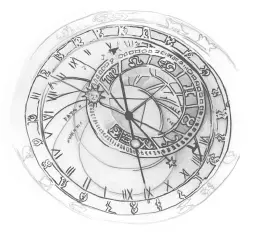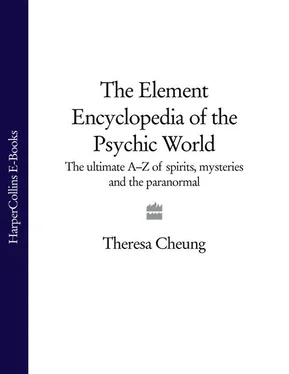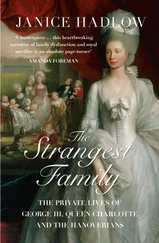The Browning circle was organized by nineteenth-century medium D D Homefor poets Robert and Elizabeth Browning. The activities of the circle converted Elizabeth to spiritualism, but her husband condemned and ridiculed Home, calling him a toady, a fraud and a leech in a poem entitled ‘Mr Sludge, the Medium’ (1864).
The Brownings met Home in 1855 when they attended a séancehe held for a wealthy couple who wanted to establish contact with their son, who had died three years previously. At the séance they witnessed table tilting, ghostly hands and rapping. Elizabeth was amazed, but Robert was unimpressed and expressed publicly his loathing for Home, suggesting that the whole thing could easily have been faked, as Home always wore loose clothing that could conceal tubes and strings to produce the phenomena. No one knows what caused Robert’s hatred, although some believe it may have been his low opinion of what he called Home’s ‘effeminacy’. Homosexuality was illegal in 1855, and there were many rumours of Home’s affairs with young men. The Brownings’ disagreement over spiritualism was the only public quarrel the couple had; Robert loathed Home so much that Elizabeth stopped talking about it. Punch magazine took Robert’s side, using rich imagery to suggest Elizabeth’s gullibility.
BUGUET, EDOUARD [1841–1901]
Edouard Buguet was a famous spirit photographerduring the 1860s and 1870s until he was exposed as a fraudin 1875. Buguet’s photographs were remarkably clear, unlike the misty pictures from other contemporary spirit photos of the era. The French photographer went to extraordinary lengths to impose ghostly images upon his photos, using live models at first but later switching to sculpted heads when he began to fear being exposed.
In 1875 Buguet’s studio was raided after a tip-off from a dissatisfied customer. His tricks were exposed, and he was convicted of fraud and sent to prison for a year. Buguet never again worked as a photographer, but his photographs have become collectors’ items, with some believing that he did actually succeed in photographing ghosts.
Titus Bull was an American physician and neurologist who believed that spirit possessionwas at the root of many illnesses. In the 1920s and 1930s he worked in New York City and treated many of his patients with spiritualist therapy. With the help of mediumCarolyn Duke, he claimed to treat and cure manic depressives, schizophrenics and alcoholics.
Bull believed that possessing spirits entered their victims through the base of the brain, the solar plexus or the reproductive organs. He thought that these spirits were not evil, just confused, and that they needed help to pass to their proper plane and leave the victim in peace. In 1932 he published a pamphlet entitled Analysis of Unusual Experiences in Healing Relative to Deceased Minds and Results of Materialism Foreshadowed. In it he suggests that spirit possession, although not a cause of mental illness, is a complicating factor and that trauma and stress can attract spirits to a person.
Bull practised general medicine in a time when little attention was paid to the mind-body connection in health, but as he was not systematic in his explanations, his work is often ignored by medical and psychical research societies.
The idea of a journey to the afterlifeis evident in every culture and every age, and it has always been considered a duty of the living to set the dead on their path to the other world. In primitive times symbolswere carved on rocks and implements and weapons buried with the dead to help them in the next life. In Greece a gold coin was buried with the dead to pay the ferryman to take them across the River of Death. The Egyptians had the most elaborate burial rituals, which lasted for days. Today the idea of a journey can still be said to exist when we lay flowers on graves to provide beauty and peace in the hope the spiritwill find it on the other side.
As well as preparations for the journey to the afterlife, the other important part of ancient burial rites was to make sure the spirit found peace and did not return to haunt the living. Some ancient cultures maintained contact with the dead, keeping artefacts of the deceased so that communication could take place with the help of a go-between. In many places in the world ancestral spirits and ancestor worshipstill play an important role, and burial rites create a doorway from this world to the next.
Gradually burial rites in the West have taken on the idea of paying respect to the person and his or her family, and the ritual has become a way to say goodbye. It is an important time because, according to psychics, the bereaved need to let go of the spirit so it can go on its way, and the spirit needs to let go of the bereaved. Burial rites therefore still represent a bridge between physical life and spiritual life.
Buruburu, meaning the sound of shivering, is a terrible ghostfrom Japanese folklore that for reasons unknown is said to lurk in forests and graveyards in the form on an old person, who is sometimes one-eyed. According to legend it attaches itself to its victim’s spine and causes a chill to run down them, or in the worst case causes them to die of fright.
The ghostof Evelyn Byrd, daughter of William Byrd II, an early American colonial settler and founder of the city of Richmond, Virginia, is reputed to haunt the grounds of her childhood home, Westover, on the James River.
Born in 1707, Evelyn was sent to England at the age of 10 to be educated, and at the age of 16 she fell in love with a man her family considered unsuitable, possibly because they thought him too old for her. At 19 Evelyn returned to Westover depressed and heartbroken. She withdrew from all company except for that of her friend and neighbour, Anne Harrison, whom she met almost daily in a grove in the plantations. For ten years Evelyn wasted away, until her death in 1737.
Before her death Evelyn made a pact with Anne that if one of them was to die the other would return as a friendly ghost, and, true to her promise, Evelyn’s ghost is alleged to have been seen by Anne smiling in the grove where they used to meet. Over the years Evelyn’s ghost has been seen dressed in white or green lace many times at Westover. She is never frightening, and when she appears she always smiles.
BYRON, LORD GEORGE GORDON [1788–1824]
One of the greatest poets of English literature, Lord Byron was deeply fascinated by the supernaturaland would investigate tales of hauntingshimself. As a young man Byron reported seeing a phantom monkin the family home of Newstead Abbey, who may or may not have died at the hands of one of Byron’s ancestors.
The phantom’s appearance was thought to herald misfortune for the family, and Byron claimed to see the ‘goblin friar’ again shortly before his ill-fated marriage to heiress Anne Milbanke in 1815. He described it as:
… monk arrayed
In cowl, and beads, and dusky garb appeared
Now in the moonlight, and now lapsed in shade,
With steps that trod as heavy, yet unheard.
 Читать дальше
Читать дальше



![Theresa Cheung - The Dream Dictionary from A to Z [Revised edition] - The Ultimate A–Z to Interpret the Secrets of Your Dreams](/books/692092/theresa-cheung-the-dream-dictionary-from-a-to-z-r-thumb.webp)









